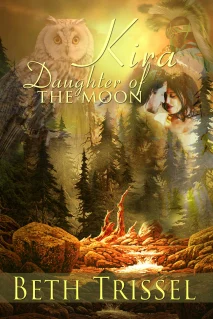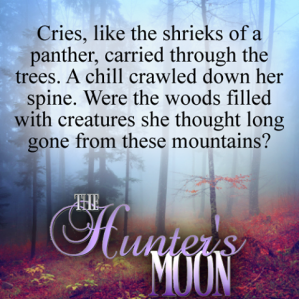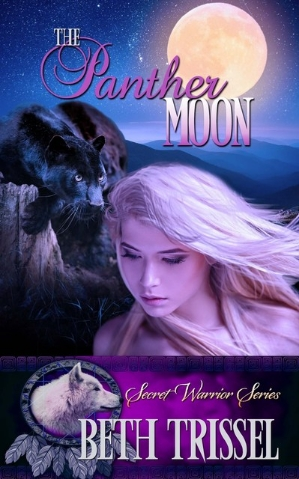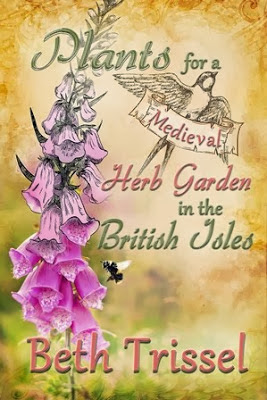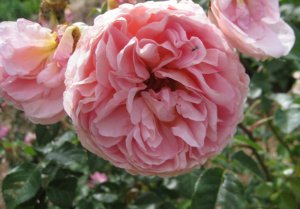 Agrimony: Used from ancient times to treat many ailments and injuries, it’s also reputed to have magical properties.
Agrimony: Used from ancient times to treat many ailments and injuries, it’s also reputed to have magical properties.
From The Scots Herbal by Tess Darwin:
“Agrimony is found in dry grassy places in most areas except the northwest of Scotland. The Gaelic name of this plant, mur-druidhean, may derive from the use of agrimony by healers to treat spiritual troubles. Ferquhar Ferguson, tried for witchcraft on Arran in 1716, admitted using agrimony to cure elf-shotten people.” (Apparently a common affliction). “Ferguson was guided in his treatment by a voice heard while sleeping, which instructed him to pull the plant in the name of the Holy Trinity.”
***Elf-shot are those persons or animals who have fallen ill after being shot by the arrows of malevolent elves. Don’t you hate it when that happens?

Another powerful herb for protection is Lady’s Mantle, found in meadows throughout Scotland (and my garden when it’s happy).
From The Scots Herbal by Tess Darwin
“The large leaves collect drops of morning dew and it was a widespread tradition to use this pure water for a refreshing face wash.
It was a powerful remedy for domestic animals that had fallen ill after being shot by malevolent elves. Water containing juice from the plant was both sprinkled on the sick beast and given it to drink.”
 More on Agrimony From A Modern Herbal:
More on Agrimony From A Modern Herbal:
“The plant is found abundantly throughout England,. In Scotland it is more local and does not penetrate very far northward. (It also grows in America)
Agrimony has an old reputation as a popular, domestic medicinal herb, being a simple well-known to all country-folk. It belongs to the Rose order of plants, and its slender spikes of yellow flowers, which are in bloom from June to early September, and the singularly beautiful form of its much-cut-into leaves, make it one of the most graceful of our smaller herbs.
The whole plant is deep green and covered with soft hairs, and has a slightly aromatic scent; even the small root is sweet-scented, especially in spring. The spikes of flowers emit a most refreshing and spicy odour like that of apricots. The leaves when dry retain most of their fragrant odour, as well as the flowers, and Agrimony was once much sought after as a substitute or addition to tea, adding a peculiar delicacy and aroma to its flavour. Agrimony is one of the plants from the dried leaves of which in some country districts is brewed what is called ‘a spring drink,’ or ‘diet drink,’ a compound made by the infusion of several herbs and drunk in spring time as a purifier of the blood.
 The long flower-spikes of Agrimony have caused the name of ‘Church Steeples’ to be given the plant in some parts of the country. It also bears the title of ‘Cockeburr,’ ‘Sticklewort’ or ‘Stickwort,’ because its seed-vessels cling by the hooked ends of their stiff hairs to any person or animal coming into contact with the plant.”
The long flower-spikes of Agrimony have caused the name of ‘Church Steeples’ to be given the plant in some parts of the country. It also bears the title of ‘Cockeburr,’ ‘Sticklewort’ or ‘Stickwort,’ because its seed-vessels cling by the hooked ends of their stiff hairs to any person or animal coming into contact with the plant.”
The whole plant yields a yellow dye: when gathered in September, the colour given is pale, much like that called nankeen; later in the year the dye is of a darker hue and will dye wool of a deep yellow. As it gives a good dye at all times and is a common plant, easily cultivated, it seems to deserve the notice of dyers.
History: The name Agrimony is from Argemone, a word given by the Greeks to plants which were healing to the eyes, the name Eupatoria refers to Mithridates Eupator, a king who was a renowned concoctor of herbal remedies. The magic power of Agrimony is mentioned in an old English medical manuscript:
‘If it be leyd under mann’s heed, He shal sleepyn as he were deed; He shal never drede ne wakyn,Till fro under his heed it be takyn.’ (That’s darn useful to know.)
 Agrimony was one of the most famous vulnerary herbs. (Vulnerary *is a plant used in the treatment of wounds). The Anglo-Saxons, who called it Garclive, taught that it would heal wounds, snake bites, warts, etc. In the time of Chaucer, when we find its name appearing in the form of Egrimoyne, it was used with Mugwort and vinegar for ‘a bad back’ and ‘alle woundes’: and one of these old writers recommends it to be taken with a mixture of pounded frogs and human blood, as a remedy for all internal hemorrhages.”
Agrimony was one of the most famous vulnerary herbs. (Vulnerary *is a plant used in the treatment of wounds). The Anglo-Saxons, who called it Garclive, taught that it would heal wounds, snake bites, warts, etc. In the time of Chaucer, when we find its name appearing in the form of Egrimoyne, it was used with Mugwort and vinegar for ‘a bad back’ and ‘alle woundes’: and one of these old writers recommends it to be taken with a mixture of pounded frogs and human blood, as a remedy for all internal hemorrhages.”
*I have to stop right here and comment. Pounded frogs and human blood mixed with Agrimony for all internal hemorrhages. Hmmm…it wonders me, as the Pennsylvania Dutch say, whose blood we’re to mix in. Probably someone else’s. And what would the proportions of pounded frog be to the herb and blood? No exact proportions given. Just a spoonful of this and a cup of that. I suspect it would take more than a spoonful of sugar to help that medicine go down.
I also like where the author goes on to say that Agrimony “has had a great reputation for curing jaundice and other liver complaints. Gerard believed in its efficacy. He says: ‘A decoction of the leaves is good for them that have naughty livers.’” Got that? It treats naughty livers.
Constituents: Agrimony contains a particular volatile oil, which may be obtained from the plant by distillation and also a bitter principle. It yields in addition 5 per cent of tannin, so that its use in cottage medicine for gargles and as an astringent applicant to indolent ulcers and wounds is well justified. Owing to this presence of tannin, its use has been recommended in dressing leather.
 Agrimony is also considered a very useful agent in skin eruptions and diseases of the blood, pimples, blotches, etc. A strong decoction of the root and leaves, sweetened with honey or sugar, has been taken successfully to cure scrofulous sores, being administered two or three times a day, in doses of a wineglassful, persistently for several months. The same decoction is also often employed in rural districts as an application to ulcers.
Agrimony is also considered a very useful agent in skin eruptions and diseases of the blood, pimples, blotches, etc. A strong decoction of the root and leaves, sweetened with honey or sugar, has been taken successfully to cure scrofulous sores, being administered two or three times a day, in doses of a wineglassful, persistently for several months. The same decoction is also often employed in rural districts as an application to ulcers.
Preparation: In North America, it is said to be used in fevers with great success, by the Indians and Canadians. In former days, it was sometimes given as a vermifuge, (*serving to expel worms and other parasites from the intestinal tract) though that use is obsolete. In the Middle Ages, it was said to have magic powers, if laid under a man’s head inducing heavy sleep till removed, but no narcotic properties are ascribed to it.
 From Herb Magic.com: “AGRIMONY is an herb that is said to turn back jinxes that have already been made, roots that have already been laid, and curses that have already been cast. Combined with Slippery Elm Bark, it is said to break spells involving Slander and Lies…combined with Rue, it is said to send back the Evil Eye (Mal Occhio) even after the Eye has already taken effect. Combined with Salt, it is said to un-make Hexes and Witchcraft.” They add, “We make no claims for AGRIMONY, and sell it as a Curio only.”
From Herb Magic.com: “AGRIMONY is an herb that is said to turn back jinxes that have already been made, roots that have already been laid, and curses that have already been cast. Combined with Slippery Elm Bark, it is said to break spells involving Slander and Lies…combined with Rue, it is said to send back the Evil Eye (Mal Occhio) even after the Eye has already taken effect. Combined with Salt, it is said to un-make Hexes and Witchcraft.” They add, “We make no claims for AGRIMONY, and sell it as a Curio only.”
*I make no claims either and am only quoting from and commenting on what I’ve researched.
This is a terrific site: The Medieval Gardener:
 Regarding Agrimony it says: “This perennial with its tall yellow spires (to 24 inches) is a native European plant often found growing wild in the Middle Ages. Recorded in the inventories of Charlemagne’s gardens (but not in the Capitulare de Villis ) and the Anglo Saxon dictionary source of Aelfric, it was highly regarded for its general healing and magical powers and was believed by the Anglo Saxons to heal wounds, warts and snake bites. If laid under a pillow, they further believed it had magical powers to induce a deep sleep until removal. Another 14th century reference claims it for the treatment of back problems along with mugwort and vinegar. Agrimony was also used as a strewing herb and, bundled with rue, broom, maidenhair and ground ivy, was used to identify witches. Today we are aware of the tannin content of agrimony and use its lovely apricot scented dried flowers and leaves to make herbal teas as well as astringent infusions, and to attract bees in the garden.” ~ Contributed by B. F. Wedlake
Regarding Agrimony it says: “This perennial with its tall yellow spires (to 24 inches) is a native European plant often found growing wild in the Middle Ages. Recorded in the inventories of Charlemagne’s gardens (but not in the Capitulare de Villis ) and the Anglo Saxon dictionary source of Aelfric, it was highly regarded for its general healing and magical powers and was believed by the Anglo Saxons to heal wounds, warts and snake bites. If laid under a pillow, they further believed it had magical powers to induce a deep sleep until removal. Another 14th century reference claims it for the treatment of back problems along with mugwort and vinegar. Agrimony was also used as a strewing herb and, bundled with rue, broom, maidenhair and ground ivy, was used to identify witches. Today we are aware of the tannin content of agrimony and use its lovely apricot scented dried flowers and leaves to make herbal teas as well as astringent infusions, and to attract bees in the garden.” ~ Contributed by B. F. Wedlake

























 “The revival interest in herbal medicine is a worldwide phenomenon.”
“The revival interest in herbal medicine is a worldwide phenomenon.”

















